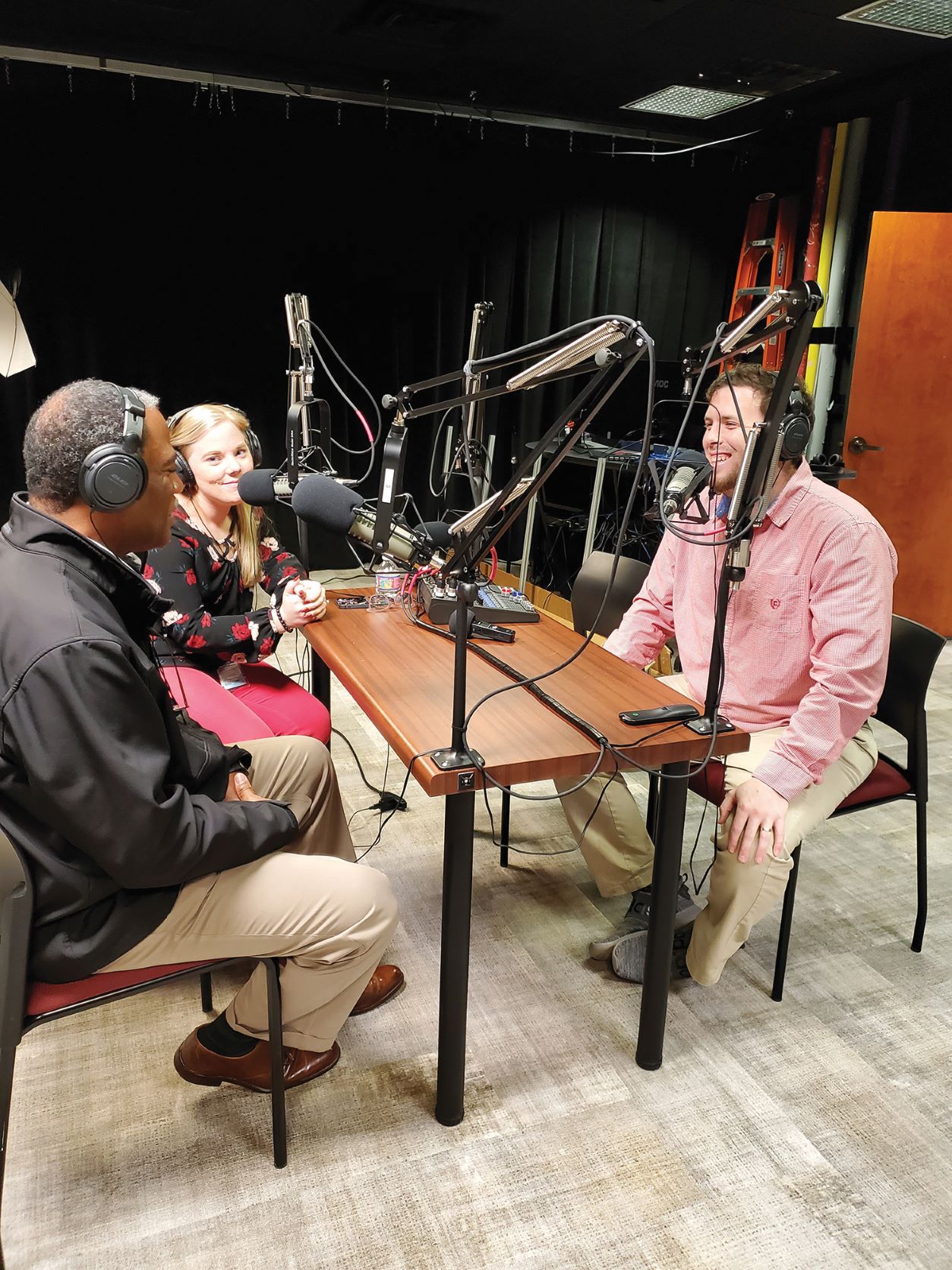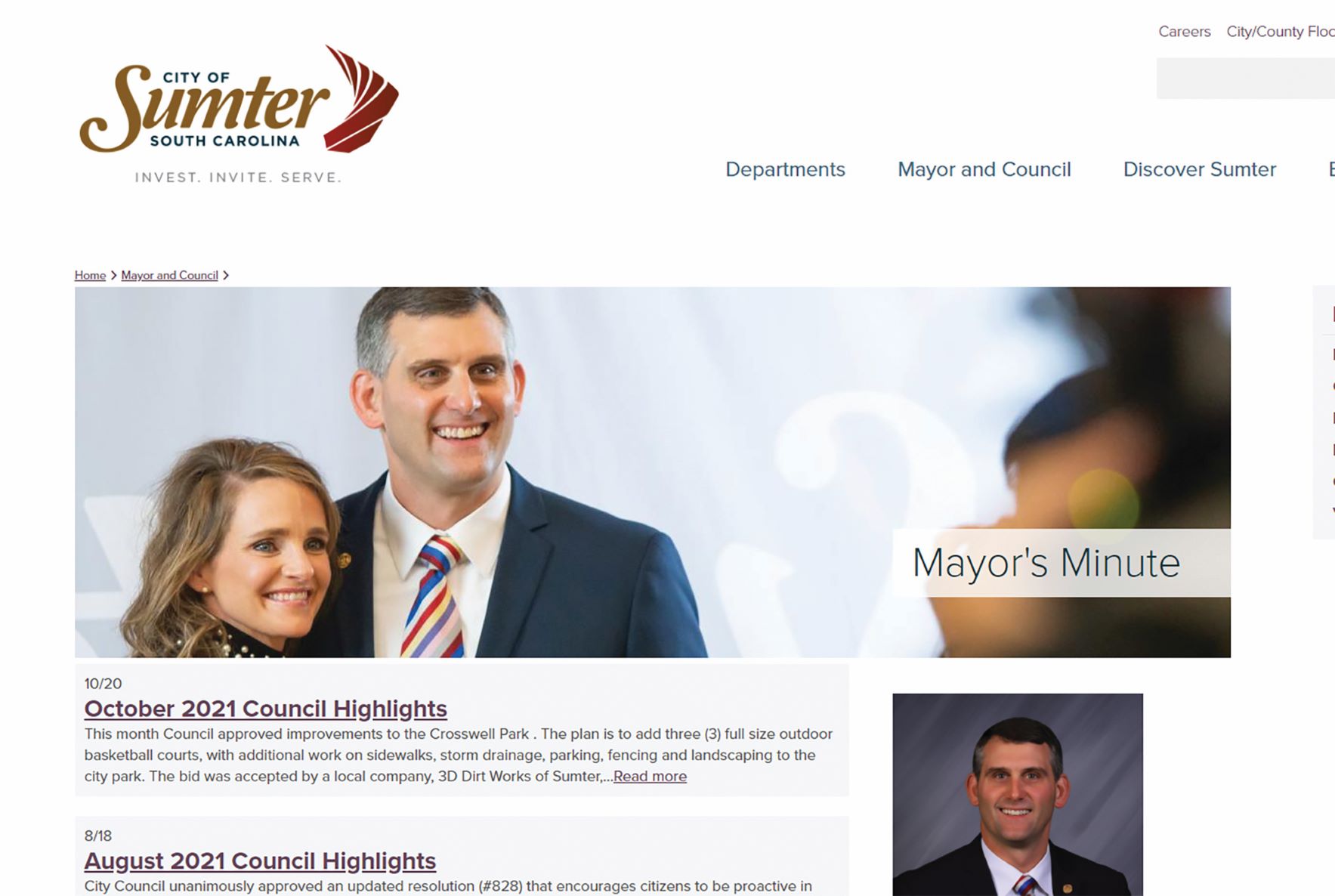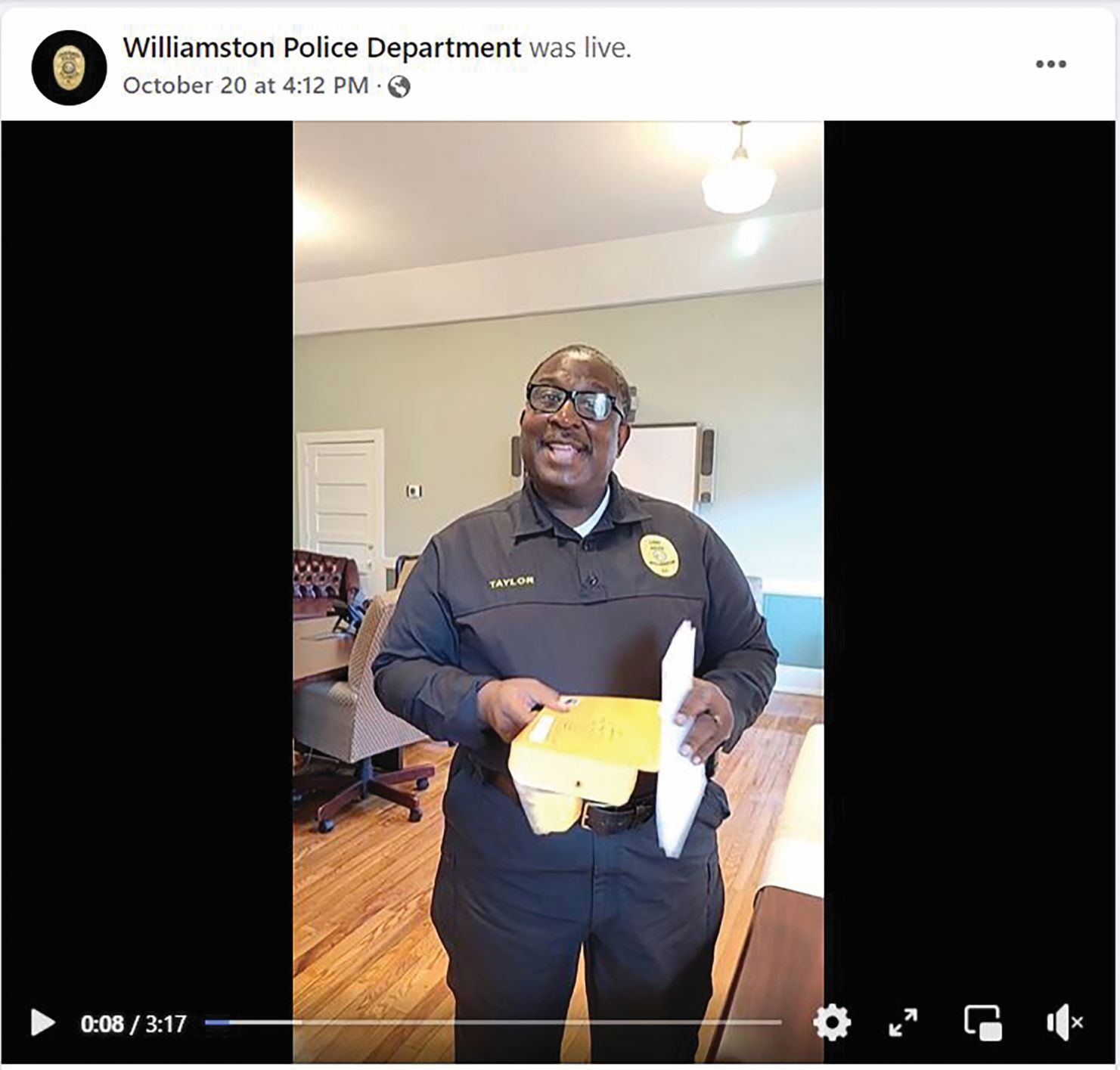Municipalities have no shortage of ways to communicate with the public. The key is matching the message with the right platform in a way that reaches the most residents.
In Rock Hill, for example, the list of tools used by the Office of Strategy Management is a long one. It includes media pitches, the city’s website, social media channels, digital signage, the City Channel with informational slides and video, paid advertising, community presentations, print material, an eBulletin system, vehicle graphics and videos including a regular series with the mayor and a news show called Rock Hill Update. The city also recently restarted its CityCast podcast to offer a deeper dive into some topics.

Rock Hill Public Works Director Terrence Nealy, left, joins as a guest on the city’s
podcast with the communications & marketing coordinators who host the show:
Ashley Studebaker, center, and Matthew Kreh. Photo: City of Rock Hill.
Katie Quinn, Rock Hill’s communications and marketing manager, said having a variety of options offers a better chance to find the right match for different constituents.
“Social media, websites, email newsletters and most video productions have to be tailored to offer bite-size pieces of information, since most audiences are quickly scanning and choosing what they want more details about,” Quinn said. “Due to the nature of podcasts and the audiences who listen, we can take 30 to 40 minutes to hear from city staff and community members in more detail.”
Last fall, all of Rock Hill’s communications and marketing efforts were consolidated under a new Office of Strategy Management. The change has helped ensure consistency of the city’s brand, messaging and voice, Quinn said. It also allowed the consolidated office to be more strategic, take down barriers between departments and operate in the best interest of the entire city.
“Don’t be afraid to try new tools, but also don’t count it as a failure if you have to shift direction or nix something altogether. It’s worth the time to draft marketing plans for more long-range initiatives to serve as the blueprint on how to move forward,” she said. “When Rock Hill started the community vaccination clinic in January, we worked from a fact sheet and updated it as needed. Communications staff have to be empowered to offer guidance on the best ways to effectively promote the needs of the organization. Sometimes it’s hard for departments to hear ‘no,’ but we try to frame it to say, ‘That won’t work for what you want, but these other tools will.’”
The City of Hardeeville has a similar list of tools that its three-person staff uses to communicate, including government access television, which has been operating for more than 20 years, mobile push alerts, a website and a host of social media outlets. Municipal meetings are broadcast several times each day, and other programing features events that take place around the city and in nearby communities, said Juan Singleton, Hardeeville’s media director.
“We also have programming that helps to inform the citizens of upcoming events and safety measures. During the recent pandemic we ran several stories on how to stay safe by using masks and social distancing. Recently we have featured vaccination clinic sites and testing sites,” he said. “A cooking show that featured our fire marshal and a councilmember highlighted safety in the kitchen and allowed for some fun moments as well.”
Every program that airs on the TV station is also linked to the town’s Facebook and Twitter accounts, and council meetings are streamed live on Facebook.
“We have different channels because we realize that not everyone uses the same social media. We have a youth council in the city. We understand that their age group is probably more into Instagram over Facebook. We have found out that Nextdoor is a great tool for some of the gated communities,” Singleton said.

Sumter's "Mayor's Minute" series highlights city operations and programs.
In Sumter, the three full-time employees in the communications department often team with staff in various departments to expand their reach, said Shelley Kile, Sumter’s communications and tourism director.
“With a small staff in the communications department that serves over 30 departments, we can’t be everywhere all the time, so we coordinate messaging and photos to be taken by department staff on site to help document project progress,” Kile said.
The City of Sumter uses various tools, including traditional media, social media, direct mail, e-news, videos and more. It also has the capability of mass calling customers to report widespread issues through its utility billing software, but reserves that service for emergencies.
“It’s important to break issues down so everyone, internally and externally, can understand and feel as if they can contribute to the development of our community. We utilize all staff and elected officials in the city as communications ambassadors to share what’s happening,” she said. “Working with the mayor’s office, we have created a series called ‘Mayor’s Minute’ that reports stories about council business, city services and community programs and provide those notes to media, employees, public officials and the public, via online and in print. Each month highlights upcoming community events, as well as provides details on projects that are approved or are in progress. That series is ever changing and is currently growing into the video and podcast markets.”

Williamston Police Chief Tony Taylor uses social media videos to talk to the community.
Photo: Town of Williamston.
In Williamston, Police Chief Tony Taylor uses social media videos to communicate with the public – and improve the morale of his department. On Facebook, viewers can see everything from Taylor getting soaked in a festival dunking booth to the chief sharing information about an arrest in a bank robbery case.
“There are two sides that people need to see. We have a human side and we like to have fun. But I also want educate the public, so I went out riding with one of our officers and posted a Facebook video,” Taylor said. “It’s important that we not only develop trust, but that we have that personal touch. People need to have a sense of knowing the people that they hire to protect them.”
With the pandemic curtailing the amount of time Taylor could spend meeting people face-to-face, social media and videos allowed him to have that dialogue with the community. Those conversations include videos that offer shout-outs and praise, for everyone from his officers to a group of children who sent thank-you notes after visiting the police department.
“We discipline in private and we praise in public. When you can tell your officers they’re doing a great job and it’s coming from the chief, that helps with the morale of the officers,” he said.
Taylor has been the chief since 2013 over the department with 21 full-time and five part-time officers.
“It helps with morale when you can brag on your guys. Not just a picture, but a video when you talk about your officers and how much they mean to the agency,” Taylor said.
